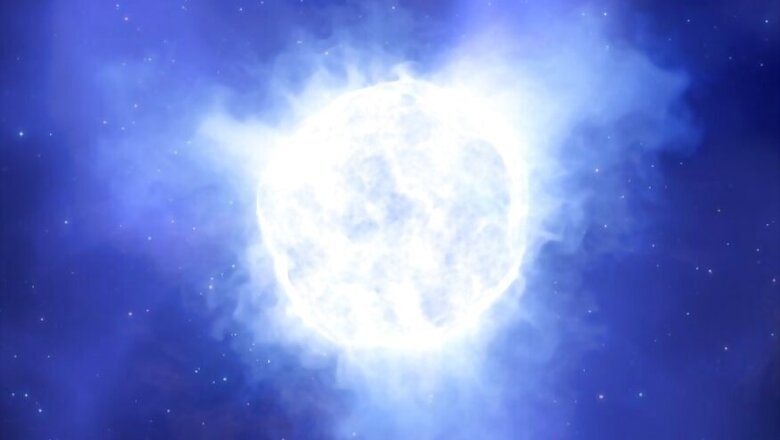
views
Astronomers have been left baffled as a monster star disappeared mysteriously from the middle of Kinman Dwarf, a galaxy that has been under our telescopes for a while. Located more than 75 million light years away in the constellation of Aquarius, the bright, blue variable star was previously observed to be almost 2.5 million times brighter than our Sun, showing a clear spike in luminosity that may have indicated something like the end of its life cycle. With such blue stars being rare in nature, it was a key sight to observe for some of our most powerful telescopes – until it simply vanished from our lenses. Scientists, on this note, are naturally baffled with how the star has disappeared, but do have a couple of theories that may explain how such a bright star could vanish.
An enigmatic collapse
One of the plausible theories that scientists have offered is that at the end of the star's life cycle, instead of producing a supernova, the gravitational forces became so high that the star simply collapsed into a black hole. The disappearance was brought to notice when the European Southern Observatory (ESO) pointed its Very Large Telescope towards Kinman Dwarf in 2019, but could not find the presence of the star. It then brought into action highly capable spectrographs such as the Echelle Spectrograph for Rocky Exoplanet and Stable Spectroscopic Observations (ESPRESSO) and the X-Shooter, which also failed to find the star.
This collided with studies from between 2001 and 2011, when astronomers came to the conclusion that it was in the last stage, and destined to explode as a supernova. What's important to note is that the star was never visible to us directly – instead, its luminosity and gargantuan outbursts are what made our spectrographs detect the existence of the blue star in Kinman Dwarf. However, the new studies revealed that the star simply went amiss, when studied in 2019 – eight years after its last documented sighting.
"This would be the first direct detection of such a monster star ending its life in this manner. It would be highly unusual for such a massive star to disappear without producing a bright supernova explosion," said Andrew Allan, a Ph.D fellow at Trinity College in Dublin, Ireland and the lead candidate of the research project.
A violent outburst
Scientists have also come up with an alternate theory for the disappearance. According to one faction, the theory suggests that the blue star underwent a mammoth, violent outburst. As a result of this outburst, the star may have lost too much mass, because of which it lost a huge volume of its luminosity, and is no longer bright enough to be spotted by our spectrographs. It is likely that, being no longer bright enough, the star is hidden behind clouds of galactic dust.
To study this enigmatic disappearance of a monster star further, ESO's more powerful Extremely Large Telescope, which will have a single 127-feet mirror, is expected to come online by 2025. This will increase our sights to faraway galaxies, and may contribute significantly towards helping us understand exactly what may have happened to the star in question.


















Comments
0 comment